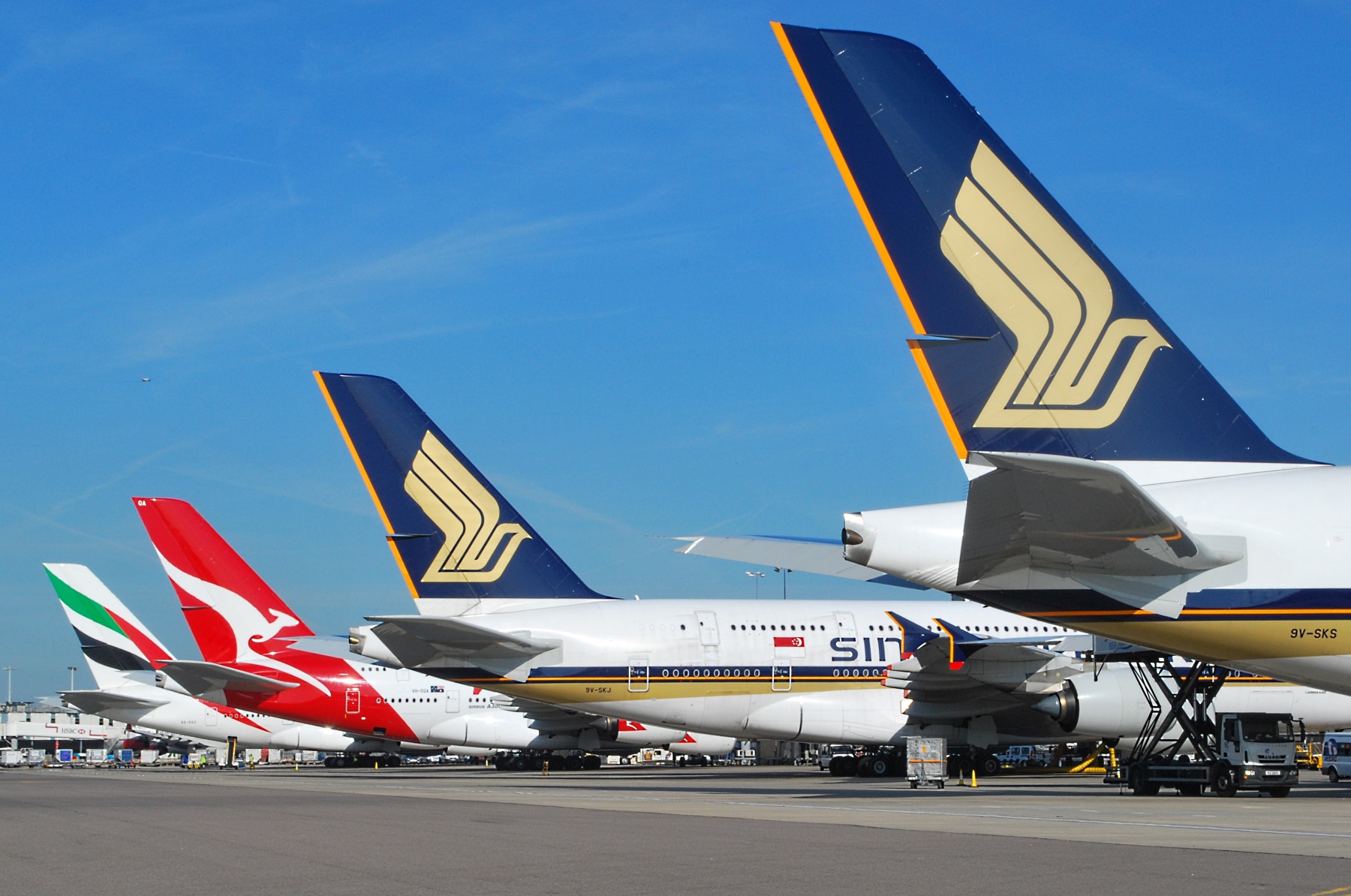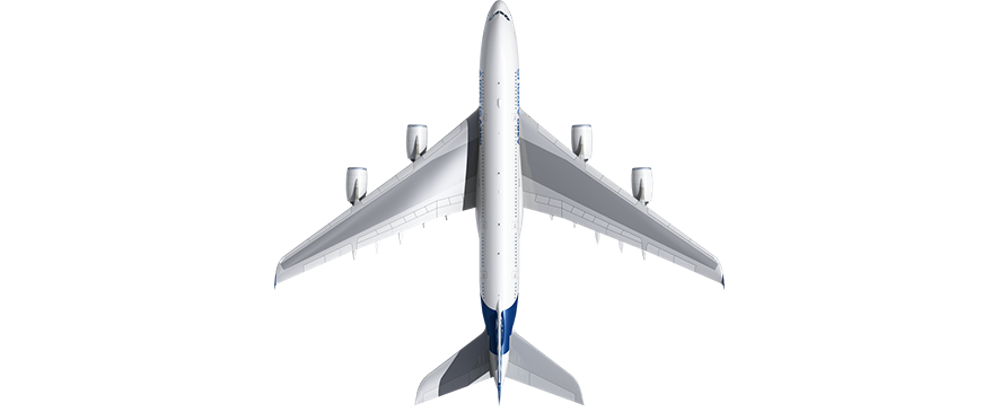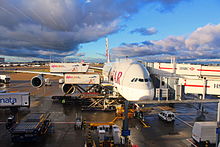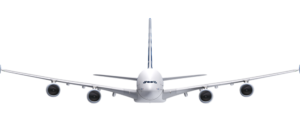
The Airbus A380 is the world’s largest passenger airliner, a wide-body aircraft manufactured by Airbus. The first prototype was unveiled in Toulouse on 18 January 2005, with its first flight on 27 April 2005. The full-length double-deck aircraft has a typical seating capacity of 525, though it is certified for up to 853 passengers. I simply love Airbus planes – particularly A350 & A380 and has been very closely following since the project inception in 2000s to demo flights in 2005 / 2006 when it visited Shanghai among other cities in the world to first flight between Singapore – Sydney in 2007 and till now. I also closley followed the Airbus factories in Hamburg & Tianjin. Im very sad that production of A380 would cease in 2021


AIRBUS A380
INTEGRATION WITH INFRASTRUCTURE & REGULATIONS
Ground operations

- In the 1990s, aircraft manufacturers were planning to introduce larger planes than the Boeing 747
- In a common effort of the International Civil Aviation Organization (ICAO) with manufacturers, airports and its member agencies, the “80-metre box” was created, the airport gates allowing planes up to 80 m (260 ft) wingspan and length to be accommodated
- Airbus designed the A380 according to these guidelines – and to operate safely on Group V runways and taxiways with a 60 metres (200 ft) loadbearing width
- The US FAA initially opposed this then in July 2007, the FAA and EASA agreed to let the A380 operate on 45 m (148 ft) runways without restrictions
- The A380-800 is approximately 30% larger in overall size than the 747-400
- Runway lighting and signage may need changes to provide clearance to the wings and avoid blast damage from the engines
- Runways, runway shoulders and taxiway shoulders may be required to be stabilised to reduce the likelihood of foreign object damage caused to (or by) the outboard engines, which are more than 25 m (82 ft) from the centre line of the aircraft compared to 21 m (69 ft) for the 747-400 and 747-8

- Airbus measured pavement loads using a 540-tonne (595 short tons) ballasted test rig, designed to replicate the landing gear of the A380
- The rig was towed over a section of pavement at Airbus’ facilities that had been instrumented with embedded load sensors
- It was determined that the pavement of most runways will not need to be reinforced despite the higher weight as it is distributed on more wheels than in other passenger aircraft with a total of 22 wheels (that is, its ground pressure is lower)
- The A380 undercarriage consists of four main landing gear legs and one noseleg (a similar layout to the 747), with the two inboard landing gear legs each supporting six wheels
- The A380 requires service vehicles with lifts capable of reaching the upper deck as well as tractors capable of handling the A380’s maximum ramp weight
- When using two jetway bridges the boarding time is 45 min, and when using an extra jetway to the upper deck it is reduced to 34 min
- The A380 has an airport turnaround time of 90–110 minutes
- In 2008 the A380 test aircraft were used to trial the modifications made to several airports to accommodate the type
Takeoff and landing separation

- In 2005, the ICAO recommended that provisional separation criteria for the A380 on takeoff and landing be substantially greater than for the 747 because preliminary flight test data suggested a stronger wake turbulence
- These criteria were in effect while the ICAO’s wake vortex steering group, with representatives from the JAA, Eurocontrol, the FAA, and Airbus, refined its 3-year study of the issue with additional flight testing
- In September 2006, the working group presented its first conclusions to the ICAO
- In November 2006, the ICAO issued new interim recommendations. Replacing a blanket 10 nautical miles (19 km) separation for aircraft trailing an A380 during approach, the new distances were 6 nmi (11 km), 8 nmi (15 km) and 10 nmi (19 km) respectively for non-A380 “Heavy”, “Medium”, and “Light” ICAO aircraft categories
- These compared with the 4 nmi (7.4 km), 5 nmi (9.3 km) and 6 nmi (11 km) spacing applicable to other “Heavy” aircraft
- Another A380 following an A380 should maintain a separation of 4 nmi (7.4 km)
- On departure behind an A380, non-A380 “Heavy” aircraft are required to wait two minutes, and “Medium”/”Light” aircraft three minutes for time based operations
- The ICAO also recommends that pilots append the term “Super” to the aircraft’s callsign when initiating communication with air traffic control, to distinguish the A380 from “Heavy” aircraft
- In August 2008, the ICAO issued revised approach separations of 4 nmi (7.4 km) for Super (another A380), 6 nmi (11 km) for Heavy, 7 nmi (13 km) for medium/small, and 8 nmi (15 km) for light
- In November 2008, an incident on a parallel runway during crosswinds made the Australian authorities change procedures for those conditions
- Singapore Airlines describe the A380s landing speed of 130–135 kn (240–250 km/h) as “impressively slow”
Maintenance
- As the A380 fleet grows older, airworthiness authority rules require certain scheduled inspections from approved aircraft tool shops
- The increasing fleet size (to about 286 in 2020) cause expected maintenance and modification to cost $6.8 billion for 2015–2020, of which $2.1 billion are for engines
- Emirates performed its first 3C-check for 55 days in 2014. During lengthy shop stays, some airlines will use the opportunity to install new interiors
